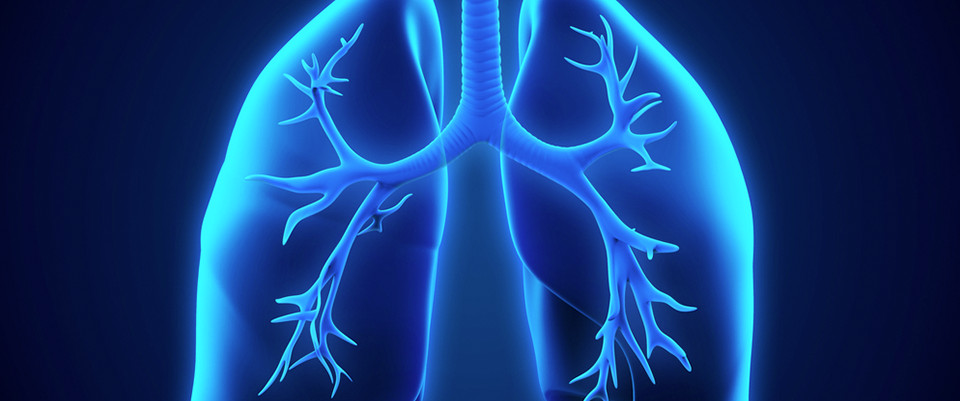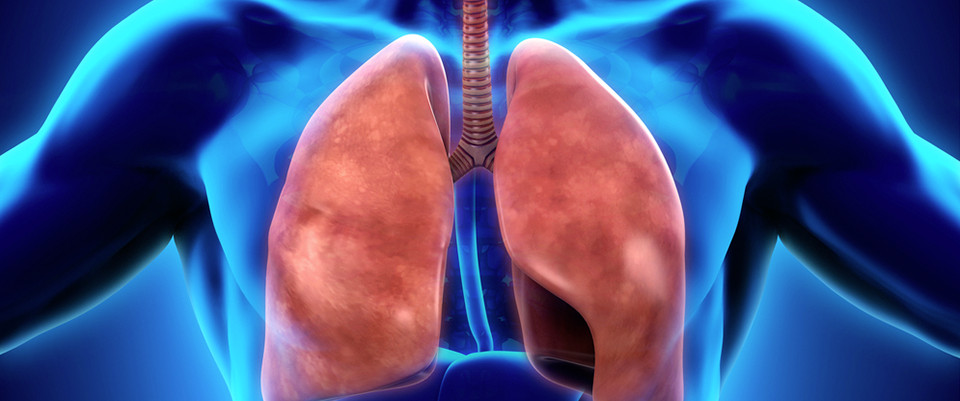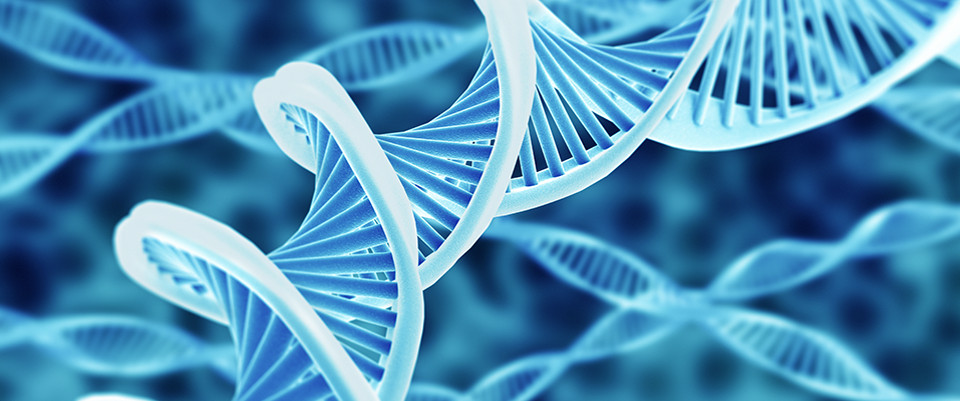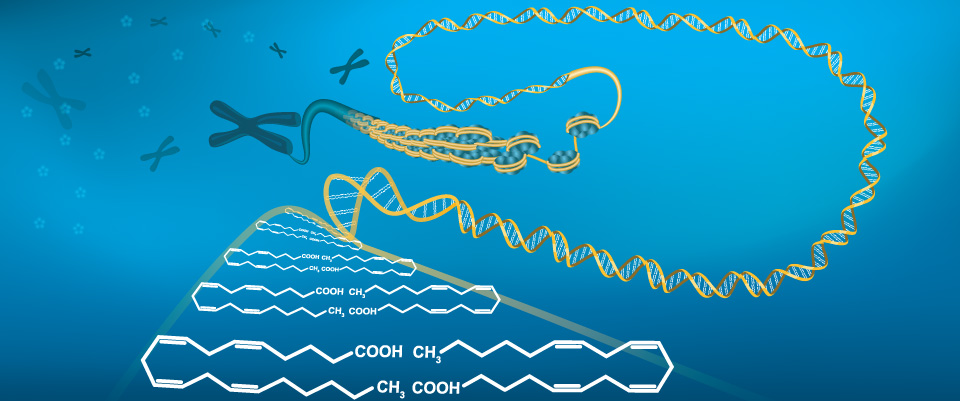PubMed
Seminal plasma metabolomics signatures of normosmic congenital hypogonadotropic hypogonadism
Heliyon. 2023 Mar 23;9(4):e14779. doi: 10.1016/j.heliyon.2023.e14779. eCollection 2023 Apr.ABSTRACTBACKGROUND: Normosmic congenital hypogonadotropic hypogonadism (nCHH) is a rare disease, whose pathogenesis remains unclear. Here, we conducted untargeted metabolomics and lipidomics to identify seminal plasma signatures of nCHH, and to study the effect of LH and FSH deficiency on semen.METHODS: Twenty-five diagnosed patients with nCHH (HH group) and twenty-three healthy participants (HC group) were enrolled. Laboratory parameters, seminal plasma samples and patients' medical data were collected. Untargeted metabolomics and lipidomic profiling were performed using mass spectrometry (MS).RESULTS: The metabolomics profiling are altered among patients with nCHH and healthy controls. There are 160 kinds of differential metabolites and the main different lipid species are TAG, PC, SM and PE.CONCLUSIONS: The metabolomics profiles in patients with nCHH changed. We hope that this work provides important insights into the pathophysiology of nCHH.PMID:37025907 | PMC:PMC10070097 | DOI:10.1016/j.heliyon.2023.e14779
Integrated transcriptomic and metabolomic analysis of cortical neurons reveals dysregulated lipid metabolism, enhanced glycolysis and activated HIF-1 signaling pathways in acute hypoxia
Heliyon. 2023 Mar 27;9(4):e14949. doi: 10.1016/j.heliyon.2023.e14949. eCollection 2023 Apr.ABSTRACTThe brain is the main oxygen-consuming organ and is vulnerable to ischemic shock or insufficient blood perfusion. Brain hypoxia has a persistent and detrimental effect on resident neurons. Previous studies have identified alterations in genes and metabolites in ischemic brain shock by single omics, but the adaptive systems that neurons use to cope with hypoxia remain uncovered. In the present study, we constructed an acute hypoxia model and performed a multi-omics analysis from RNA-sequencing and liquid chromatography-mass spectrometry (LC-MS)-based metabolomics on exploring potentially differentially expressed genes (DEGs) and metabolites (DEMs) in primary cortical neurons under severe acute hypoxic conditions. The TUNEL assay showed acute hypoxia-induced apoptosis in cortical neurons. Omics analysis identified 564 DEGs and 46 DEMs categorized in the Kyoto encyclopedia of genes and genomes (KEGG) database. Integrative pathway analysis highlighted that dysregulated lipid metabolism, enhanced glycolysis, and activated HIF-1 signaling pathways could regulate neuron physiology and pathophysiology under hypoxia. These findings may help us understand the transcriptional and metabolic mechanisms by which cortical neurons respond to hypoxia and identify potential targets for neuron protection.PMID:37025787 | PMC:PMC10070144 | DOI:10.1016/j.heliyon.2023.e14949
Modulation of the biological network of lumbar spinal stenosis by Tongdu Huoxue Decoction based on clinical metabolomics
Front Mol Biosci. 2023 Mar 21;10:1074500. doi: 10.3389/fmolb.2023.1074500. eCollection 2023.ABSTRACTObjective: To explore the clinical efficacy and metabolic mechanism of Tongdu Huoxue Decoction (THD) in treating lumbar spinal stenosis (LSS). Methods: A total of 40 LSS patients and 20 healthy participants were recruited from January 2022 to June 2022. The patients' pre- and post-treatment visual analogue scale (VAS) and Japanese Orthopaedic Association (JOA) scores were recorded. ELISA kits were used to assess pre- and post-treatment levels of serum Interleukin-1beta (IL-1β), Alpha tumour necrosis factor (TNF-α) and prostaglandin E2 (PGE2). Finally, the patients' pre- and post-treatment and healthy human sera were subjected to extensively targeted metabolomics using Ultra Performance Liquid Chromatography (UPLC) to identify potential differential metabolites and metabolic pathways using multivariate statistical analysis. Results: Compared to the pre-treatment (group A), the patients' VAS scores decreased significantly (p < 0.05), while JOA scores increased significantly (p < 0.05) post-treatment (group B), indicating that THD could effectively improve the pain and lumbar spine function of LSS patients. Moreover, THD could effectively inhibit the expression of IL-1β, TNF-α and PGE2-associated inflammatory factors in serum. Regarding metabolomics, the levels of 41 differential metabolites were significantly different in the normal group (group NC) compared to group A, and those were significantly restored after treatment with THD, including chenodeoxycholic acid 3-sulfate, taurohyodeoxycholic acid, 3,5-Dihydroxy-4-methoxybenzoic acid, pinocembrin. These biomarkers are mainly involved in purine metabolism, steroid hormone biosynthesis and amino acid metabolism. Conclusion: This clinical trial demonstrated that THD is effective in improving pain, lumbar spine function and serum levels of inflammation in patients with LSS. Moreover, its mechanism of action is related to the regulation of purine metabolism, steroid hormone biosynthesis and the expression of key biomarkers in the metabolic pathway of amino acid metabolism.PMID:37025656 | PMC:PMC10070985 | DOI:10.3389/fmolb.2023.1074500
An overview of nutritional profiling in foods: Bioanalytical techniques and useful protocols
Front Nutr. 2023 Mar 21;10:1124409. doi: 10.3389/fnut.2023.1124409. eCollection 2023.ABSTRACTMaintaining a nutritious diet is essential for humans if they want to live a healthier life. Several food businesses and food safety organizations play a significant role and offer useful ways for improving nutritional quality that assists consumers in making informed selections. Making poor food choices and consuming unhealthy meals are the main causes of non-communicable diseases (NCDs). Nutritional profiling (NP) models are developed to evaluate the nutritional value, calorie content, and the amount of micronutrients and macronutrients contained in a given food accompanied by additional details on the nutritional anomaly provided by published standard nutrients and nutritional databases. To construct an ideal nutritional model that can facilitate food consumption, bioanalytical methods such as chromatography, microscopic techniques, molecular assays, and metabolomics can be applied. With the use of these technologies, one can learn more about the health advantages of nutrition and how to prevent disease. A wider element of NP is also provided by the developing technologies in the area of nutrition research, such as nanotechnology, proteomics, and microarray technology. In this review, we are focusing on the different bioanalytical techniques and the various protocols of NP and their application and refinement of the models. We have evaluated various NP techniques currently used in the food industry for the detection of different components present in food items.PMID:37025612 | PMC:PMC10070841 | DOI:10.3389/fnut.2023.1124409
Integrated nontargeted and targeted metabolomics analyses amino acids metabolism in infantile hemangioma
Front Oncol. 2023 Mar 21;13:1132344. doi: 10.3389/fonc.2023.1132344. eCollection 2023.ABSTRACTInfantile hemangioma (IH) is the most common benign tumor in children. However, the exact pathogenesis of IH remains unclear. Integrated nontargeted and targeted metabolic analyses were performed to obtain insight into the possible pathogenic mechanism of IH. The results of nontargeted metabolic analysis showed that 216 and 128 differential metabolites (DMs) were identified between hemangioma-derived endothelial cells (HemECs) and HUVECs in positive-ion and negative-ion models, respectively. In both models, these DMs were predominantly enriched in pathways related to amino acid metabolism, including aminoacyl-tRNA biosynthesis and arginine and proline metabolism. Then, targeted metabolic analysis of amino acids was further performed to further clarify HemEC metabolism. A total of 22 amino acid metabolites were identified, among which only 16 metabolites, including glutamine, arginine and asparagine, were significantly differentially expressed between HemECs and HUVECs. These significant amino acids were significantly enriched in 10 metabolic pathways, including 'alanine, aspartate and glutamate metabolism', 'arginine biosynthesis', 'arginine and proline metabolism', and 'glycine, serine and threonine metabolism'. The results of our study revealed that amino acid metabolism is involved in IH. Key differential amino acid metabolites, including glutamine, asparagine and arginine, may play an important role in regulating HemEC metabolism.PMID:37025602 | PMC:PMC10070834 | DOI:10.3389/fonc.2023.1132344
Mass Spectrometry-Based Approaches for Clinical Biomarker Discovery in Traumatic Brain Injury
Curr Treat Options Neurol. 2022 Dec;24(12):605-618. doi: 10.1007/s11940-022-00742-3. Epub 2022 Sep 15.ABSTRACTPURPOSE OF REVIEW: Precision treatments to address the multifaceted pathophysiology of traumatic brain injury (TBI) are desperately needed, which has led to the intense study of fluid-based protein biomarkers in TBI. Mass Spectrometry (MS) is increasingly being applied to biomarker discovery and quantification in neurological disease to explore the proteome, allowing for more flexibility in biomarker discovery than commonly encountered antibody-based assays. In this narrative review, we will provide specific examples of how MS technology has advanced translational research in traumatic brain injury (TBI) focusing on clinical studies, and looking ahead to promising emerging applications of MS to the field of Neurocritical Care.RECENT FINDINGS: Proteomic biomarker discovery using MS technology in human subjects has included the full range of injury severity in TBI, though critically ill patients can offer more options to biofluids given the need for invasive monitoring. Blood, urine, cerebrospinal fluid, brain specimens, and cerebral extracellular fluid have all been sources for analysis. Emerging evidence suggests there are distinct proteomic profiles in radiographic TBI subtypes, and that biomarkers may be used to distinguish patients sustaining TBI from healthy controls. Metabolomics may offer a window into the perturbations of ongoing cerebral insults in critically ill patients after severe TBI.SUMMARY: Emerging MS technologies may offer biomarker discovery and validation opportunities not afforded by conventional means due to its ability to handle the complexities associated with the proteome. While MS techniques are relatively early in development in the neurosciences space, the potential applications to TBI and neurocritical care are likely to accelerate in the coming decade.PMID:37025501 | PMC:PMC10072855 | DOI:10.1007/s11940-022-00742-3
Proteomics and metabolomics profiling of meat exudate to determine the impact of postmortem aging on oxidative stability of beef muscles
Food Chem X. 2023 Mar 23;18:100660. doi: 10.1016/j.fochx.2023.100660. eCollection 2023 Jun 30.ABSTRACTThe objective of this study was to characterize the major proteomes and metabolites in beef exudate and determine their relationship to color and oxidative quality of beef muscles. Beef loin (LD) and tenderloin (PM) muscles were cut into sections, individually vacuum-packaged, and aged for 9, 16 and 23 days at 2 °C. Following aging, beef exudates were collected and analyzed for both proteomics and metabolomics profiles. Proteome analysis indicated clustering by muscle types, while metabolomics profiling further clustered the samples based on the aging periods. The PM exudate had a greater concentration of oxidative enzymes, while the LD exudate contained more glycolytic enzymes. Greater lipid, nucleotide, carnitine and glucoside metabolites were observed in LD and 23d exudates. HSP70 and laminin proteins, together with glucosides metabolites, were correlated to muscle oxidative stability. The results indicated that meat exudate could be a viable analytical matrix to determine changes in quality attributes of meat with aging.PMID:37025416 | PMC:PMC10070507 | DOI:10.1016/j.fochx.2023.100660
Therapeutic Mechanism of Baicalin in Experimental Colitis Analyzed Using Network Pharmacology and Metabolomics
Drug Des Devel Ther. 2023 Mar 31;17:1007-1024. doi: 10.2147/DDDT.S399290. eCollection 2023.ABSTRACTBACKGROUND: Baicalin is an important active flavonoid isolated from the roots of Scutellaria baicalensis (S. baicalensis), a well-known traditional Chinese herb used in treating inflammatory bowel disease (IBD). The objectives of this study were to assess the potential benefit of baicalin in experimental colitis, as well as to investigate metabolic biomarkers of experimental colitis in conjunction with network pharmacology.METHODS: Using a widely utilized network pharmacology technique, baicalin's targets and pathways were predicted. Simultaneously, experimental colitis was induced by intrarectal administration of TNBS. Histopathology examinations were performed to confirm pathological changes. Plasma samples were examined by using an untargeted metabolomics technique based on ultra-high performance liquid chromatography-high resolution mass spectrometry (UHPLC-HRMS) to screen differential metabolites and associated metabolic pathways. Additionally, network pharmacology and integrated analysis of metabolomics were used to identify the primary targets.RESULTS: Through network pharmacology research, tumor necrosis factor (TNF), interleukin 6 (IL6), serine/threonine-protein kinase (AKT1), and other 7 proteins were found to be the main targets of baicalin against IBD. The untargeted metabolomics results showed that 47 metabolites in glycerophospholipids and sphingolipid metabolism were involved as key pathways in the experimental colitis model group. 19 metabolites, including Sphingomyelin (SM d42:2, SM d42:1, SM d34:1), Lysophosphatidic acids (LPA 18:4), 1-Palmitoylglycerophosphocholine, and 17(18)-EpETE were demonstrated as key metabolites for baicalin to exert effects. Moreover, udp-glucose ceramide glucosyltransferase (UGCG), sphingomyelin synthase 1 (SGMS1), and sphingosine kinase (SPHK1) were predicted as sphingolipids-linked targets of baicalin against experimental colitis by integrative analysis.CONCLUSION: Based on these results, it implies that sphingolipid metabolism and sphingolipid signaling pathway might be acted as therapeutic mechanism for baicalin against experimental colitis.PMID:37025160 | PMC:PMC10072146 | DOI:10.2147/DDDT.S399290
Metabolomic analysis of methyl jasmonate treatment on phytocannabinoid production in <em>Cannabis sativa</em>
Front Plant Sci. 2023 Mar 21;14:1110144. doi: 10.3389/fpls.2023.1110144. eCollection 2023.ABSTRACTCannabis sativa is a multi-use and chemically complex plant which is utilized for food, fiber, and medicine. Plants produce a class of psychoactive and medicinally important specialized metabolites referred to as phytocannabinoids (PCs). The phytohormone methyl jasmonate (MeJA) is a naturally occurring methyl ester of jasmonic acid and a product of oxylipin biosynthesis which initiates and regulates the biosynthesis of a broad range of specialized metabolites across a number of diverse plant lineages. While the effects of exogenous MeJA application on PC production has been reported, treatments have been constrained to a narrow molar range and to the targeted analysis of a small number of compounds. Using high-resolution mass spectrometry with data-dependent acquisition, we examined the global metabolomic effects of MeJA in C. sativa to explore oxylipin-mediated regulation of PC biosynthesis and accumulation. A dose-response relationship was observed, with an almost two-fold increase in PC content found in inflorescences of female clones treated with 15 mM MeJA compared to the control group. Comparison of the inflorescence metabolome across MeJA treatments coupled with targeted transcript analysis was used to elucidate key regulatory components contributing to PC production and metabolism more broadly. Revealing these biological signatures improves our understanding of the role of the oxylipin pathway in C. sativa and provides putative molecular targets for the metabolic engineering and optimization of chemical phenotype for medicinal and industrial end-uses.PMID:37025140 | PMC:PMC10070988 | DOI:10.3389/fpls.2023.1110144
Effect of drainage ratio during strawberry cultivation:The volatilomics-based shelf-life indicators for strawberry fruit
Front Plant Sci. 2023 Mar 21;14:1124827. doi: 10.3389/fpls.2023.1124827. eCollection 2023.ABSTRACTThe metabolome of strawberries at harvest determines their storage capacity. Therefore, dynamics of volatile production during storage of strawberry cultivated under diverse drainage ratios, T1 (12.0%), T2 (25.3%), T3 (36.4%), and T4 (56.5%), were evaluated. Among the various non-target VOCs analysis, there were some groups including aldehydes, esters, and furans occupied over 5% with exhibiting high coefficient of determination (R2 ) following the days after storage (DAS). Aldehydes content decreased over the storage period, while the esters (methyl butanoate, methyl hexanoate, ethyl hexanoate, and benzyl acetate) and furanones (furaneol and mesifuran) were increased as representing aroma compounds in strawberry ripening. Even on the same day, it was investigated that the release of VOCs linked to fruit decay was delayed in the groups (T1 and T2) that were given relatively little water compared to T3 and T4. The hexanal and ethyl hexanoate as an over-ripened signal showed a rapid increase from 4 DAS to 5 DAS in T3 and T4, respectively, while T1 and T2 showed significant increase from 5 DAS to 6 DAS. Relatively slower over-ripening tendency of T1 and T2 was supported by changes of firmness, total soluble solid content, anthocyanin content, and antioxidant activity during storage. T1 and T2 showed higher antioxidant activity at the harvest time and lower anthocyanin accumulation than T3 and T4. The present study elucidated that the preharvest drainage changes during cultivation was involved in fruit quality during strawberry storage. Besides, volatilomics analysis depicted that T2 as an optimal ratio, could delay the occurrence of stress and senescence, and guaranteed the strawberry yield. In conclusion, this study provided evidence that the practical application of drainage ratios could improve horticultural product quality even with low water use and VOCs might be considered an early indicator for strawberry fruit shelf-life.PMID:37025137 | PMC:PMC10070737 | DOI:10.3389/fpls.2023.1124827
Differential metabolic host response to pathogens associated with community-acquired pneumonia
Metabol Open. 2023 Mar 23;18:100239. doi: 10.1016/j.metop.2023.100239. eCollection 2023 Jun.ABSTRACTBACKGROUND: Metabolic changes induced by the host immune response to pathogens found in patients with community-acquired pneumonia (CAP) may provide insight into its pathogenesis. In this study, we characterized differences in the host metabolic response to common CAP-associated pathogens.METHOD: Targeted metabolomic profiling was performed on serum samples obtained from hospitalized CAP patients (n = 119) at admission. We quantified 347 unique metabolites across multiple biochemical classes, including amines, acylcarnitines, and signaling lipids. We evaluated if unique associations between metabolite levels and specific CAP-associated pathogens could be identified.RESULTS: Several acylcarnitines were found to be elevated in C. burnetii and herpes simplex virus and lowered in M. pneumoniae as compared to other pathogens. Phenylalanine and kynurenine were found elevated in L. pneumophila as compared to other pathogens. S-methylcysteine was elevated in patients with M. pneumoniae, and these patients also showed lowered cortisol levels in comparison to almost all other pathogens. For the herpes simplex virus, we observed a unique elevation of eicosanoids and several amines. Many lysophosphatidylcholines showed an altered profile in C. burnetii versus S. pneumoniae, L. pneumophila, and respiratory syncytial virus. Finally, phosphatidylcholines were negatively affected by the influenza virus in comparison to S. pneumoniae.CONCLUSIONS: In this exploratory analysis, metabolites from different biochemical classes were found to be altered in serum samples from patients with different CAP-associated pathogens, which may be used for hypothesis generation in studies on differences in pathogen host response and pathogenesis of CAP.PMID:37025095 | PMC:PMC10070890 | DOI:10.1016/j.metop.2023.100239
Editorial: Applications of metabolomics to the discovery of biomolecules from natural products
Front Mol Biosci. 2023 Apr 6;10:1190730. doi: 10.3389/fmolb.2023.1190730. eCollection 2023.NO ABSTRACTPMID:37091869 | PMC:PMC10117775 | DOI:10.3389/fmolb.2023.1190730
Integrative metabolomic and transcriptomic analysis reveals difference in glucose and lipid metabolism in the longissimus muscle of Luchuan and Duroc pigs
Front Genet. 2023 Apr 6;14:1128033. doi: 10.3389/fgene.2023.1128033. eCollection 2023.ABSTRACTLuchuan pig, an obese indigenous Chinese porcine breed, has a desirable meat quality and reproductive capacity. Duroc, a traditional western breed, shows a faster growth rate, high feed efficiency and high lean meat rate. Given the unique features these two porcine breeds have, it is of interest to investigate the underlying molecular mechanisms behind their distinctive nature. In this study, the metabolic and transcriptomic profiles of longissimus dorsi muscle from Duroc and Luchuan pigs were compared. A total of 609 metabolites were identified, 77 of which were significantly decreased in Luchuan compared to Duroc, and 71 of which were significantly elevated. Most differentially accumulated metabolites (DAMs) upregulated in Luchuan were glycerophospholipids, fatty acids, oxidized lipids, alcohols, and amines, while metabolites downregulated in Luchuan were mostly amino acids, organic acids and nucleic acids, bile acids and hormones. From our RNA-sequencing (RNA-seq) data we identified a total of 3638 differentially expressed genes (DEGs), 1802 upregulated and 1836 downregulated in Luchuan skeletal muscle compared to Duroc. Combined multivariate and pathway enrichment analyses of metabolome and transcriptome results revealed that many of the DEGs and DAMs are associated with critical energy metabolic pathways, especially those related to glucose and lipid metabolism. We examined the expression of important DEGs in two pathways, AMP-activated protein kinase (AMPK) signaling pathway and fructose and mannose metabolism, using Real-Time Quantitative Reverse Transcription PCR (qRT-PCR). Genes related to glucose uptake, glycolysis, glycogen synthesis, fatty acid synthesis (PFKFB1, PFKFB4, MPI, TPI1, GYS1, SLC2A4, FASN, IRS1, ULK1) are more activated in Luchuan, while genes related to fatty acid oxidation, cholesterol synthesis (CPT1A, HMGCR, FOXO3) are more suppressed. Energy utilization can be a decisive factor to the distinctive metabolic, physiological and nutritional characteristics in skeletal muscle of the two breeds we studied. Our research may facilitate future porcine breeding projects and can be used to reveal the potential molecular basis of differences in complex traits between various breeds.PMID:37091786 | PMC:PMC10118036 | DOI:10.3389/fgene.2023.1128033
Cryptic Chemical Variation in a Marine Red Alga as Revealed by Nontargeted Metabolomics
ACS Omega. 2023 Apr 6;8(15):13899-13910. doi: 10.1021/acsomega.3c00301. eCollection 2023 Apr 18.ABSTRACTMany marine algae occupy habitats that are dark, deep, or encrusted on other organisms and hence are frequently overlooked by natural product chemists. However, exploration of less-studied organisms can lead to new opportunities for drug discovery. Genetic variation at the individual, species, genus, and population levels as well as environmental influences on gene expression enable expansion of the chemical repertoire associated with a taxonomic group, enabling natural product exploration using innovative analytical methods. A nontargeted LC-MS and 1H NMR spectroscopy-based metabolomic study of 32 collections of representatives of the calcareous red algal genus Peyssonnelia from coral reef habitats in Fiji and the Solomon Islands revealed significant correlations between natural products' chemistry, phylogeny, and biomedically relevant biological activity. Hierarchical cluster analysis (HCA) of LC-MS data in conjunction with NMR profiling and MS/MS-based molecular networking revealed the presence of at least four distinct algal chemotypes within the genus Peyssonnelia. Two Fijian collections were prioritized for further analysis, leading to the isolation of three novel sulfated triterpene glycosides with a rearranged isomalabaricane carbon skeleton, guided by the metabolomic data. The discovery of peyssobaricanosides A-C (15-17) from two Fijian Peyssonnelia collections, but not from closely related specimens collected in the Solomon Islands that were otherwise chemically and phylogenetically very similar, alludes to population-level variation in secondary metabolite production. Our study reinforces the significance of exploring unusual ecological niches and showcases marine red algae as a chemically rich treasure trove.PMID:37091395 | PMC:PMC10116502 | DOI:10.1021/acsomega.3c00301
Endometrial cancer diagnostic and prognostic algorithms based on proteomics, metabolomics, and clinical data: a systematic review
Front Oncol. 2023 Apr 6;13:1120178. doi: 10.3389/fonc.2023.1120178. eCollection 2023.ABSTRACTEndometrial cancer is the most common gynaecological malignancy in developed countries. Over 382,000 new cases were diagnosed worldwide in 2018, and its incidence and mortality are constantly rising due to longer life expectancy and life style factors including obesity. Two major improvements are needed in the management of patients with endometrial cancer, i.e., the development of non/minimally invasive tools for diagnostics and prognostics, which are currently missing. Diagnostic tools are needed to manage the increasing number of women at risk of developing the disease. Prognostic tools are necessary to stratify patients according to their risk of recurrence pre-preoperatively, to advise and plan the most appropriate treatment and avoid over/under-treatment. Biomarkers derived from proteomics and metabolomics, especially when derived from non/minimally-invasively collected body fluids, can serve to develop such prognostic and diagnostic tools, and the purpose of the present review is to explore the current research in this topic. We first provide a brief description of the technologies, the computational pipelines for data analyses and then we provide a systematic review of all published studies using proteomics and/or metabolomics for diagnostic and prognostic biomarker discovery in endometrial cancer. Finally, conclusions and recommendations for future studies are also given.PMID:37091170 | PMC:PMC10118013 | DOI:10.3389/fonc.2023.1120178
Metabolic changes underlying drug resistance in the multiple myeloma tumor microenvironment
Front Oncol. 2023 Apr 6;13:1155621. doi: 10.3389/fonc.2023.1155621. eCollection 2023.ABSTRACTMultiple myeloma (MM) is characterized by the clonal expansion of malignant plasma cells in the bone marrow (BM). MM remains an incurable disease, with the majority of patients experiencing multiple relapses from different drugs. The MM tumor microenvironment (TME) and in particular bone-marrow stromal cells (BMSCs) play a crucial role in the development of drug resistance. Metabolic reprogramming is emerging as a hallmark of cancer that can potentially be exploited for cancer treatment. Recent studies show that metabolism is further adjusted in MM cells during the development of drug resistance. However, little is known about the role of BMSCs in inducing metabolic changes that are associated with drug resistance. In this Perspective, we summarize current knowledge concerning the metabolic reprogramming of MM, with a focus on those changes associated with drug resistance to the proteasome inhibitor Bortezomib (BTZ). In addition, we present proof-of-concept fluxomics (glucose isotope-tracing) and Seahorse data to show that co-culture of MM cells with BMSCs skews the metabolic phenotype of MM cells towards a drug-resistant phenotype, with increased oxidative phosphorylation (OXPHOS), serine synthesis pathway (SSP), TCA cycle and glutathione (GSH) synthesis. Given the crucial role of BMSCs in conveying drug resistance, insights into the metabolic interaction between MM and BMSCs may ultimately aid in the identification of novel metabolic targets that can be exploited for therapy.PMID:37091139 | PMC:PMC10117897 | DOI:10.3389/fonc.2023.1155621
Biomarker identification and pathway analysis of <em>Astragalus membranaceus</em> and <em>Curcuma zedoaria</em> couplet medicines on adenine-induced chronic kidney disease in rats based on metabolomics
Front Pharmacol. 2023 Apr 6;14:1103527. doi: 10.3389/fphar.2023.1103527. eCollection 2023.ABSTRACTBackground: Chronic kidney disease (CKD) is usually insidious, and most affected individuals are asymptomatic until the disease becomes advanced. The effective treatment of CKD would rely on the incorporation of multidisciplinary approaches. Astragalus membranaceus (AM) and Curcuma zedoaria (CZ) have been widely used in the treatment of CKD. However, the mechanism of AM and CZ in the treatment of CKD is still unclear. Methods: This study was designed to evaluate the effects of AM and CZ on adenine-induced rats and to investigate the underlying mechanism by using metabolomic analysis. Addition of 0.75% adenine to the diet of rats for 3 weeks induced the animal model of CKD. The rats in the treatment group were treated with AM and CZ (2.1 g/kg/day) for 4 weeks. Blood and kidney samples were collected for biochemical and histological examination. Ultra-high-performance liquid chromatography/Q Exactive HFX mass spectrometer (UHPLC-QE-MS) was applied to analyze metabolic profiling variations in the kidney. Results: The results showed that AM and CZ could significantly reduce serum creatinine (Scr) and blood urea nitrogen (BUN) levels in CKD rats and alleviate renal pathological injury. By comparing the endogenous components of the normal group and the model group in positive ion mode and negative ion mode, a total of 365 and 155 different metabolites were screened, respectively. A total of 117 and 73 metabolites with significantly different expressions were identified between model group and AM and CZ group in positive ion mode and negative ion mode, respectively. The pivotal pathways affected by AM and CZ included nicotinate and nicotinamide metabolism, and glycine, serine and threonine metabolism. Furthermore, significant changes in metabolites in CKD rats after AM and CZ therapies were observed, including L-Threonine, D-pantothenic acid, and nicotinamide. Moreover, we found that AM and CZ significantly reduced renal fibrosis and inflammation in CKD rats, which may be related to the regulation of SIRT1/JNK signaling pathway. Conclusion: In conclusion, AM and CZ significantly reduced renal fibrosis and inflammation in CKD rats, which may be related to the regulation of SIRT1/JNK signaling pathway. Furthermore, L-Threonine, D-pantothenic acid, and nicotinamide may be potential biomarkers for the progression and treatment of CKD.PMID:37089928 | PMC:PMC10116179 | DOI:10.3389/fphar.2023.1103527
Integrating transcriptomics and metabolomics to analyze the mechanism of hypertension-induced hippocampal injury
Front Mol Neurosci. 2023 Apr 6;16:1146525. doi: 10.3389/fnmol.2023.1146525. eCollection 2023.ABSTRACTOBJECTIVE: Hypertension is a public health challenge worldwide due to its high prevalence and multiple complications. Hypertension-induced damage to the hippocampus leads to behavioral changes and various brain diseases. Despite the multifaceted effects of hypertension on the hippocampus, the mechanisms underlying hippocampal lesions are still unclear.METHODS: The 32-week-old spontaneously hypertensive rats (SHR) and Wistar-Kyoto (WKY) rats were selected as the study subjects. Behavioral experiments such as an open field test (OFT), an elevated plus maze (EPM) test, and the Morris water maze (MWM) test were performed to show the behavioral characteristics of the rats. A comprehensive transcriptomic and metabolomic analysis was performed to understand the changes in the hippocampus at the metabolic and genetic levels.RESULTS: Behavioral tests showed that, compared to WKY rats, SHR showed not only reduced memory capacity but more hyperactive and impulsive behavior. In addition, transcriptomic analysis screened for 103 differentially expressed genes. Metabolomic analysis screened 56 metabolites with significant differences, including various amino acids and their related metabolites.CONCLUSION: Comprehensive analysis showed that hypertension-induced hippocampal lesions are closely associated with differential metabolites and differential genes detected in this study. The results provide a basis for analyzing the mechanisms of hypertension-induced hippocampal damage.PMID:37089694 | PMC:PMC10115962 | DOI:10.3389/fnmol.2023.1146525
Non-targeted metabolomics of moldy wheat by ultra-performance liquid chromatography - quadrupole time-of-flight mass spectrometry
Front Microbiol. 2023 Apr 6;14:1136516. doi: 10.3389/fmicb.2023.1136516. eCollection 2023.ABSTRACTINTRODUCTION: As one of the staple foods for the world's major populations, the safety of wheat is critical in ensuring people's wellbeing. However, mildew is one of the prevalent safety issues that threatens the quality of wheat during growth, production, and storage. Due to the complex nature of the microbial metabolites, the rapid identification of moldy wheat is challenging.METHODS: In this research, identification of moldy wheat samples was studied using ultra-performance liquid chromatography - quadrupole time-of-flight mass spectrometry (UPLC-QTOF-MS) coupled with chemometrics. The non-targeted PCA model for identifying moldy wheat from normal wheat was established by using previously established compounds database of authentic wheat samples. The partial least squares-discriminant analysis (PLS-DA) was performed.RESULTS AND DISCUSSION: By optimizing the model parameters, correct discrimination of the moldy wheat as low as 5% (w/w) adulteration level could be achieved. Differential biomarkers unique to moldy wheat were also extracted to identify between the moldy and authentic wheat samples. The results demonstrated that the chemical information of wheat combined with the existing PCA model could efficiently discriminate between the constructed moldy wheat samples. The study offered an effective method toward screening wheat safety.PMID:37089557 | PMC:PMC10119584 | DOI:10.3389/fmicb.2023.1136516
A metabolomic and proteomic study to elucidate the molecular mechanisms of immunotherapy resistance in patients with oesophageal squamous cell carcinoma
Biomed Rep. 2023 Apr 6;18(5):36. doi: 10.3892/br.2023.1619. eCollection 2023 May.ABSTRACTSystemic chemotherapy, the standard first-line treatment option for patients with advanced oesophageal squamous cell carcinoma (OSCC), results in a median survival of ~1 year. Immune checkpoint inhibitors are a breakthrough oncology treatment option; however, most patients with advanced OSCC develop primary and acquired resistance to programmed death receptor-1 (PD-1) monoclonal antibody, severely affecting their prognosis. Therefore, there is an urgent need to investigate the molecular mechanism underlying resistance to treatment. The present study aimed to explore the mechanism of resistance to PD-1 monoclonal antibody. Plasma samples were collected from patients with OSCC treated with immunotherapy, who achieved pathological response/partial response (CR/PR) or stable disease/progressive disease (SD/PD) after the fourth treatment cycle. TM-widely targeted metabolomics, widely targeted lipidomics, and DIA proteomics assays were performed. Differential metabolites were screened based on fold change (FC) ≥1.5 or ≤0.67 and a VIP ≥1; differential proteins were screened based on FC >1.5 or <0.67 and P<0.05. The identified metabolites were annotated and mapped using the Kyoto Encyclopedia of Genes and Genomes (KEGG) pathway databases. The differential proteins were annotated to the Gene Ontology and KEGG pathway databases. A correlation network diagram was drawn using differential expressed proteins and metabolites with (Pearson correlation coefficient) r>0.80 and P<0.05. Finally, 197 and 113 differential metabolites and proteins were screened, respectively, in patients with CR/PR and SD/PD groups. The KEGG enrichment analysis revealed that all of these metabolites and proteins were enriched in cholesterol metabolism and in the NF-κB and phospholipase D signalling pathways. The present study is the first to demonstrate that PD-1 inhibitor resistance may be attributed to cholesterol metabolism or NF-κB and phospholipase D signalling pathway activation. This finding suggests that targeting these signalling pathways may be a promising novel therapeutic approach in OSCC which may improve prognosis in patients undergoing immunotherapy.PMID:37089578 | PMC:PMC10119673 | DOI:10.3892/br.2023.1619











